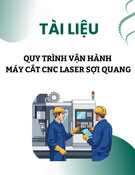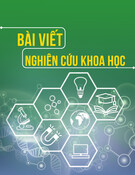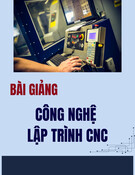Soldering is easy here's how to do it
by: Mitch Altman
(soldering wisdom) Andie Nordgren (Comics adaptation) Jeff Keyzer (Layout and editing)
Distribute widely!
Download this comic book and share it with your friends!
http://mightyohm.com/soldercomic
Soldering
is a really useful skill.
This is a soldering iron. Its tip gets hot enough to melt solder, which is metal. That's about 200 degrees Celsius!
It is also way easy!
REally, it is!
You’ll see.
Soldering is also lots of fun!
Safety tip #1 (of 3): If you touch the tip, you will let go very quickly!
If you know how to solder, you can make just about anything with electronics, which is just too cool! There are many ways to make good solder connections. I’m going to explain how I do it.
Let's get started!
When the solder heats up, the rosin melts almost immediately
I t i s a c t u a l l y h o l l o w a n d f i l l e d w i t h r o s i n ( s i m i l a r t o t h e s t u f f u s e d t o m a k e b o w s f o r v i o l i n s s t i c k y ) .
The Metal follows shortly thereafter
the elements Sn and Pb
This is solder. It is made of metal, Usually tin and lead.
The ROSIN flows around what you want to solder, cleans the metal, and helps make a good solder connection.
The best solder for electronics has rosin core and is 60% tin, 40% lead.
Safety tip #2 (of 3):
also known as flux
Lead is poisonous. It gets on your skin when you hold the solder, so wash your hands after soldering!
We use the soldering iron to melt the solder and make electrical connections.
If you don’t wash your hands after soldering, the lead may get in your body, where it gets stored in your brain for your entire life. if enough collects there then you go insane, and you lose all of your friends. So - wash your hands after soldering, and keep your friends!
There are other types, for instance lead-free solder, but it has toxic chemicals in its core, and it is not quite as easy to use as solder with lead. It also corrodes soldering iron tips quickly. If you can only get lead-free solder where you live, it’s OK, but please don’t breathe in the nasty smoke.
Electronic circuits are made up of electronic parts connected together.
PCB or just
"THE Board"
The PCB makes it easy because it has pads for each part.
together.
For a circuit to work correctly, we need to connect together everything that should connect together, and not connect anything that should not be connected
There are many ways to connect electronic parts together, but perhaps the easiest way is with a Printed Circuit Board
All of the parts have wires sticking out of them:
Most pads have a hole in the middle – this is where the lead pokes through and makes a connection to the circuit!
All of these wires, regardless of what they look like, are called
since they lead to the parts.
If you look carefully at the PCB, you will see lines connecting pads together with other pads – these lines are called traces.
leads
) ” z d e e l “ d e c n u o n o r p (
Let ’s make our f irst so lder connect ion !
some parts can go in the wrong way!
If you put all of the leads from the parts into the correct pads for the parts and if you put all of the parts in the correct orientation and if you make all good solder connections
then the circuit will just work! This is because the board connects everything that should be connected, and nothing that should not be connected.
We’ll start with a resistor.
So, to solder in the resistor, you start by finding the correct value of resistance from the project’s documentation.
Then bend the two leads of the resistor down the width of the part, like this:
Then place the two leads through the two pads on the PCB for this resistor.
Resistors have two leads and (unlike some parts, such as diodes, which have a “plus” side and a “minus” side) can be placed in their pads in either direction.
You push the resistor’s leads through the pads until the part rests flat on the PCB
(sometimes you may need to wiggle and tug gently on the leads from the bottom of the PCB to do this).
PCBs usually have markings to show where each part goes (and if the orientation matters, the PCB usually has some way to show you this).
For most PCBs, all of the parts are placed through the pads on the printed side of the PCB (which we’ll call the top of the board), and we’ll solder all of the pads on the bottom of the board. Since the word “resistor” starts with the letter “R”, the PCB usually marks places where resistors go with an “R”, followed by the resistor’s number, such as “R3”
Then you turn the PCB over so we can solder the two pads.
As you turn the PCB over, you will need to hold the resistor with your finger so it doesn’t fall out of the board.
As I said earlier, soldering irons get hot enough to melt metal. That means that the tips get hot enough to oxidize quickly, which basically means that they get dirty just sitting in the air!
Got it? Great!
Time to actually solder!
Hold the soldering iron in your dominant hand, like you would hold a pencil.
then you bend the leads of the resistor outwards at about 45 degrees so the part won’t fall out while we solder it in place. The oxides are an insulator for heat, so we want to clean them off the tip before each solder connection so the heat flows nicely and we can make good solder connections.
Hold the solder in your other hand.
This is why we have a wet sponge: to clean the oxides off the tip. Just scrape the tip across the sponge gently, then rotate the iron and scrape gently across the sponge again.
This should make the tip silvery and somewhat shiny – ready to solder. Remember to clean the tip like this before each connection you make – the tips oxidize quickly! If the tip is nice and silvery and shiny, you can make good connections.
Then add about 1mm to 3mm of solder under the tip.
Touch the cleaned tip to both the pad and the lead of the part you want to solder. Keep it there for about 1 second, so everything heats up nicely.
Don’t add it above the tip, since that melts the solder only onto the tip, where it doesn’t do any good. we want the solder to flow nicely all around both the pad and the lead to make a good connection.
The solder won’t melt until it actually touches the hot soldering iron tip, but once it touches the tip, that’s when it melts, and you can then add your 1mm to 3mm of solder.
But – and this is VERY important – keep the soldering iron tip on the pad and lead for about 1 more second since it takes time for the solder to flow around the pad and the lead, and it will only flow when it is hot.
Then, pull the solder away.
Then pull the soldering iron away, and take a look at your perfect solder connection! See how easy it is!
Now put that soldering iron back in its stand while we’re not using it.
Please note that the solder cools down and hardens quickly all on its own. It only takes about a second. And then you are ready for your next solder connection.
That smoke that you saw when the tin/lead solder melts is the rosin vaporizing.
The stand keeps the hot iron safely on the table. Most people say that it’s not fun to have it land in your lap!
it contains some chemicals that are not good for you, so try not to breathe it!
you can blow gently on the connection as you solder to keep the smoke away from your lungs.
Let’s take a look at what makes a good solder connection.
or if
the solder is flat along the board
If you can see any of the hole or pad
t h e A l s o , s o l d e r m a k e s a l s m a l b u m p .
You can tell a good solder connection because the solder totally covers the pad and surrounds the lead.
then you didn’t add enough solder and so there may not be a connection where we need one.
If this is the case, no problem – just repeat the procedure (clean the tip, touch the tip for 1 second on the pad and lead, add 1mm to 3mm of solder, pull the solder away, keep the tip on the pad and lead for 1 more second, and pull the tip away), and it should then be totally fine.
If it does, no problem! just clean the tip, hold the tip to the solder blob between the pads for 1 second
If there is too much solder, that means that you added so much solder that there is a solder blob on a pad that is big enough to also touch another pad, creating a connection where there should not be one. This can happen.
you may want to wear safety glasses!
then bang the board against your work table to fling the excess molten solder to the table
Some people like to solder parts to their pads after adding a bunch of parts to the board.
I n b e t w e e n t o o m u c h a n d t o o l i t t l e s o l d e r i s a l o t o f l e e w a y . T h i s i s o n e r e a s o n w h y s o l d e r i n g i s e a s y .
I prefer to add and solder only one part to the board at a time. I find this easier since there aren’t so many leads that can get in the way of my soldering iron.
good too!
Both good!
Also, if I add more than one part to the board I sometimes miss soldering a pad, since it isn’t so easy (as you might think it would be) to see which connections are soldered.
The connections should then be fine (though you may need to lightly scrape any excess solder from the PCB, which you can usually do with your fingernail)
To cut the lead, we’ll use a small wire cutter. One side has flat cutting edges, and the other side has a deep groove.
Place the flat edge down, parallel to the PCB, just at the top of the little bump of solder. squeeze the handles, and the cutting edges snap shut.
After soldering all of the leads of the part you are soldering, it is time to cut off the excess leads. This must be done to ensure that the excess leads do not bend over and short to another lead or pad.
Safety tip #3 (of 3): ALWAYS hold the lead you are cutting with one hand while you cut with your other hand.
which turns the excess lead into a projectile that hits you right in your eye! if this happens, then there will be a connection where we do not want one.
If the excess lead is too short to hold onto (but long enough to potentially short out to something on your PCB), then position the wire cutter, hold your fingers over the lead,
this will keep the excess lead from hitting anyone in the eye (or shorting out somewhere on your project)
you may also want
to wear safety glasses!
If you always do this, you will always be safe.
Leads that are already very short, such as IC sockets, do not need to be cut – they have leads that are too short to bend over and make shorts.
and then squeeze.
If you make a mistake, it is totally OK. All mistakes are fixable (though some are easier than others).
And making mistakes is how we learn to become better at everything we do.
While soldering is easy, unsoldering takes lots of practice. And if you make a mistake, you get to have some practice!
As you solder more, you will pick up many tips and tricks that will make soldering even easier. If you like soldering, and want to solder well, you’ll want to buy some good tools. But you do not need to spend a lot of money to get them.
But you are now totally ready to solder just about anything!
You can buy a decent soldering iron (in the shape of a long, fat pencil) for about US$15
You’ll need a soldering iron stand that fits a wet sponge, which will cost you about US$6
Then you’ll need an OK wire cutter, for another US$6
i f y o u c a n g e t i t , I 6 0 / 4 0 t i n / l e a d w i t h r e c o m m e n d ( a s I m e n t i o n e d b e f o r e , r o s i n c o r e l e a d - f r e e s o l d e r w i l l w o r k f i n e , b u t i t i s n o t a s e a s y t o w o r k w i t h ) .
You really don’t need more
But you might also want long nose pliers (about US$6) and wire strippers (about US$10). (And safety glasses can be bought for as little as US$2.)
o f
t
r
a
p
t
a
T
Distribute widely!
)
Enjoy!
Buy a pound roll (or a 500g roll) of decent solder for about US$35 and you’ll be set for years of satisfying soldering If you really want to get fancy, or if you think you will be soldering lots, or soldering a bunch of small things you can buy a decent soldering station, complete with a stand and sponge for about US$60
e
e
c
Narration by Mitch Altman http://cornfieldelectronics.com
t
h
b r
z d P
y
b
y e h
u
c
p
e
b a
b
COmics adaptation by Andie Nordgren http://log.andie.se
i s e c o m i c b o u k t o M a h i n g s h i s b o o k r o - a r s H o w T c W h o e C o o l h M i l r o l e h i n g t l e o p w i c o n t t m a n K n o w N o t P F o r r , h A l ( y e s s . K f M i f l i s a n d J e r N o S t t o
Edited by Jeff Keyzer http://mightyohm.com
Translate it, use it, spread it, color it, teach with it! http://mightyohm.com/soldercomic








![Thép cán kết cấu hàn: [Thông tin chi tiết/Báo giá/Hướng dẫn lựa chọn]](https://cdn.tailieu.vn/images/document/thumbnail/2020/20201014/maryland93/135x160/2381602661478.jpg)




![Bài tập tối ưu trong gia công cắt gọt [kèm lời giải chi tiết]](https://cdn.tailieu.vn/images/document/thumbnail/2025/20251129/dinhd8055/135x160/26351764558606.jpg)












